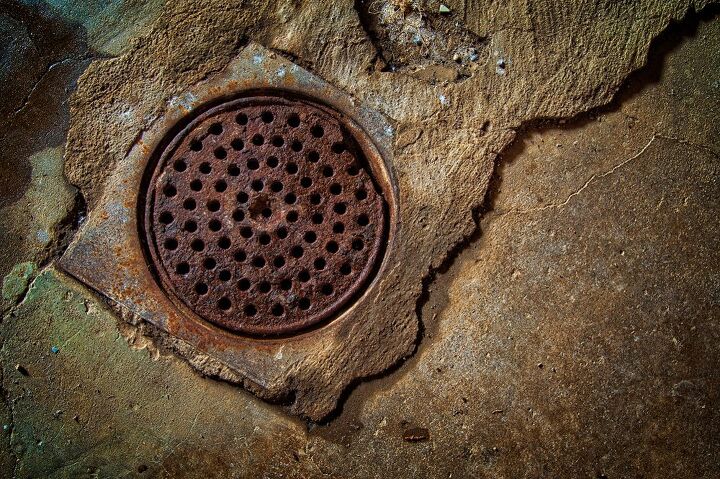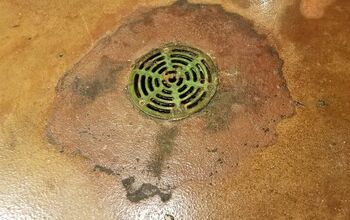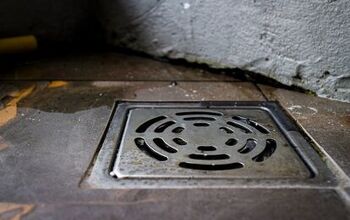Where Does A Basement Floor Drain Go? (Find Out Now!)

Have you ever looked at your basement floor drain and wondered just where exactly it goes? It is easy to forget that they are so important upon looking at them because their purpose is not immediately clear. So, where does your basement floor drain go?
Water enters a basement floor drain and enters the storm drain or sewer system connected to your house. Some basement floor drains lead to the sump pit where it pushes the water up through the ground outside. Water enters the catch bowl beneath the basement floor drain, goes into the drainpipe, and enters the sewer or storm drain.
Low-laying basements use an ejector pump to push the wastewater into a sewer pit. Let’s explore where your basement floor drain leads to and why it’s important.
Do You Need Basement Remodeling Services?
Get free, zero-commitment quotes from pro contractors near you.

Where Does the Basement Floor Drain Lead To?
Basement floor drains lead to either the connected sewer system or the storm drain system. Excess water enters the drain, goes through the catch bowl, and is carried away. Some homes have floor basement floor drains that drain into a sump pit and the water rises through the ground.
Most homes are connected to a municipal sewer system, and floor drains are often required to drain into them. However, some municipalities require that your drain leads to a sump pit. Sump pit draining is more common in rural areas that are far away from a municipal sewer system.
Sump Pit
It is for basement floor drains to drain to a sump pit if you cannot drain to a sewer system. However, there are more restrictions when it comes to sump pits because they drain into the soil. You cannot drain water from a washing machine into a basement floor drain if it feeds into a sump pit, for example.
That is because wastewater from washing machines generally contains chemicals that are bad for the soil. Detergents, fabric softeners, and bleach are all bad for the soil, wildlife, and animals around your home. You cannot drain a water softener into a basement drain that drains into a sump pit either because of the salt content.
Ejector Pump
Low basements cannot drain into a sewer or sump pit, and your only option is to drain into an ejector pump. Ejector pumps can pump your wastewater into a sewer pit, and it is necessary if your basement can’t reach your sewer mainline. This is common if you have a basement that is built down low, and the ejector pump gives it the extra power to enter a sewer pit.
The average cost of an ejector pump is $450, but it can cost as much as $800. It is possible to install an ejector pump on your own, but it can be dangerous and sewer gases are harmful.
Ejector pumps are the least common way to remove wastewater from a basement floor drain. However, you need to make sure that you have one in place if you have no sump pit or direct sewer access.
Floor Drain Smells Like Sewage
Basement floor drains contain traps for safety and sanitary purposes. Traps keep sewer gases at bay and out of your house, but they don’t always work. Sewer gases can emit from a basement floor drain trap when they become dry, but you can pour water into the trap to fix it.
Inspect the drain’s cleanout plug and replace it if it is missing or damaged. Cleanout plugs can come loose or even fall off, and that can cause your basement floor drain to smell like sewage. You can prevent sewer smells from coming out of the floor drain if you pour water down the drain every 2-3 weeks.
Sewer odors that persist after you use water or replace the cleanout plug can point to a larger problem. Contact a plumber or your local municipal sewer service if the problem seems to be with the sewer itself, and not your basement floor drain.
What Causes Basement Floor Drain To Back Up?
A basement floor drain can back up when you flush things that shouldn’t be flushed, such as paper towels. It is also common for basement floor drains to back up during bouts of heavy rain or when snow melts. Excess water can cause the water level to rise too high in a sewer and back up through the floor drain.
You can fix a clogged floor drain if you take off the cover and remove debris with a drain snake. Homeowners can also plunge a basement floor drain with a toilet plunger. More extreme cases, such as mainline clogs and pipe damage, require a professional plumber.
Do You Need Basement Remodeling Services?
Get free, zero-commitment quotes from pro contractors near you.

Related Questions
What can I use to unclog a basement floor drain?
You can unclog a basement floor drain with a drain snake or wire hanger. Mix baking soda and white vinegar, pour it down the drain and dissolve the clog in your basement floor drain.
Do basement floor drains have traps?
Yes, basement floor drains have traps that keep sewer gases from entering your home. Water sits in the trap so that sewer odors can’t escape. Make sure that there is always water in the trap so that sewer odors don’t fill the air.
Related Articles

Nick Durante is a professional writer with a primary focus on home improvement. When he is not writing about home improvement or taking on projects around the house, he likes to read and create art. He is always looking towards the newest trends in home improvement.
More by Nick Durante

















![10 Best Electric Pressure Washers – [2022 Reviews & Guide]](https://cdn-fastly.upgradedhome.com/media/2023/07/31/9070600/10-best-electric-pressure-washers-2022-reviews-guide.jpg?size=350x220)












